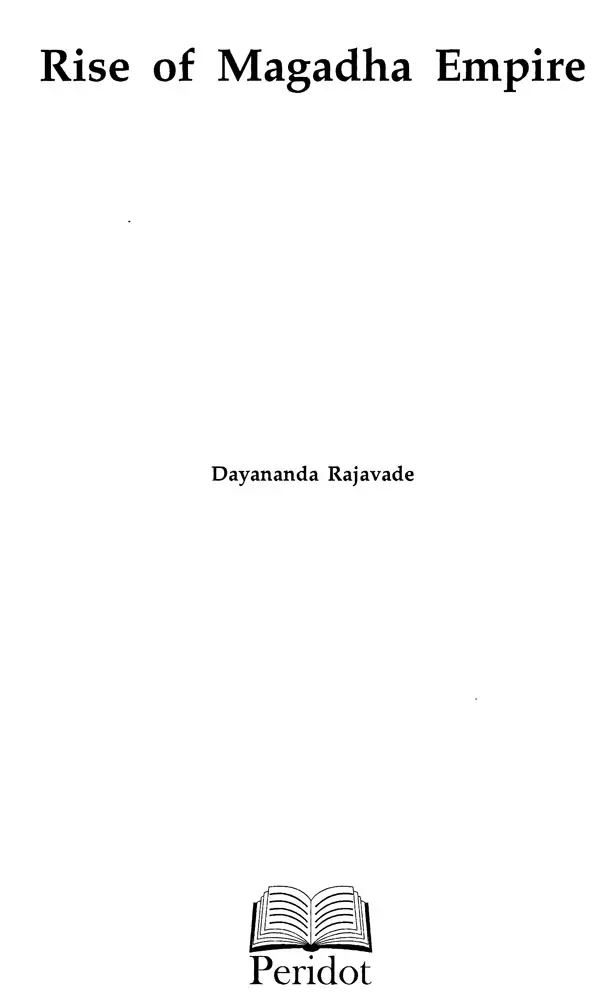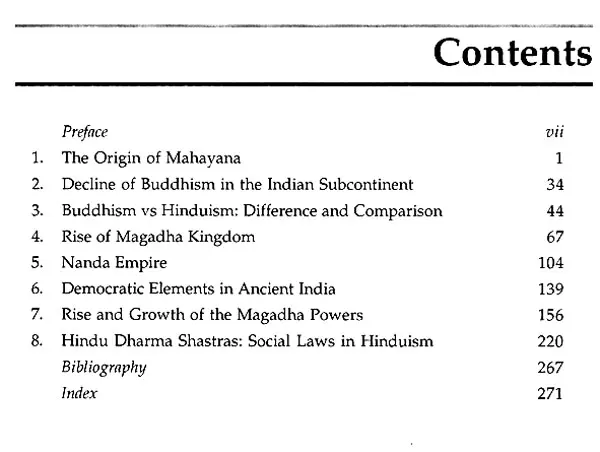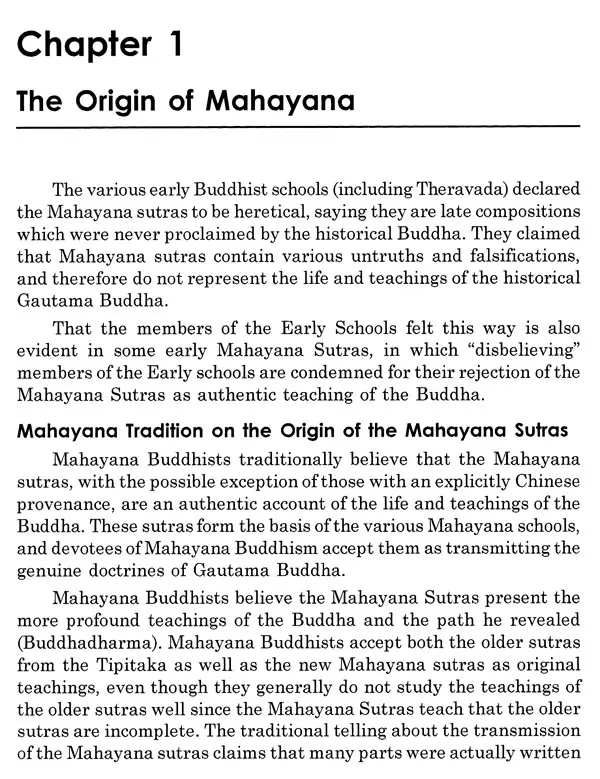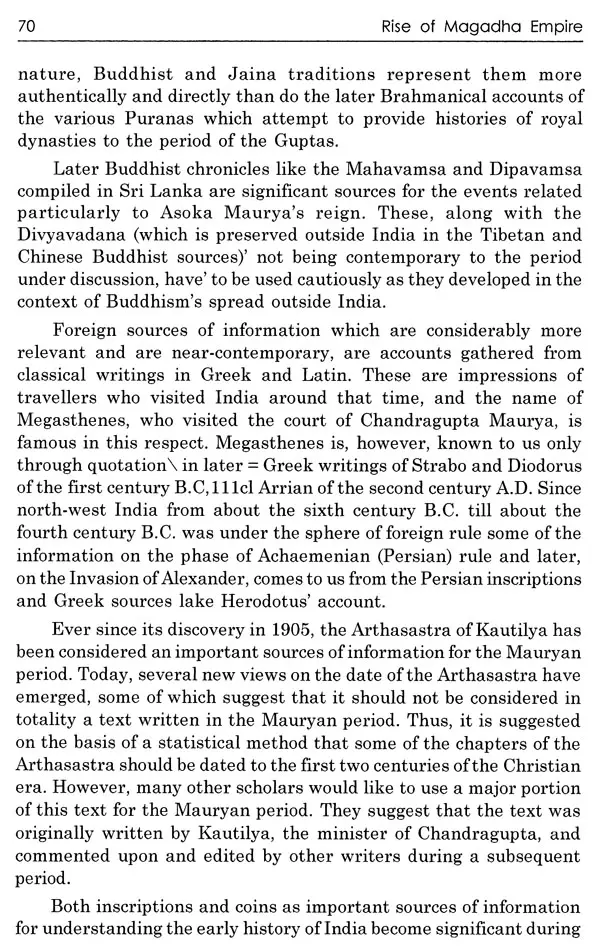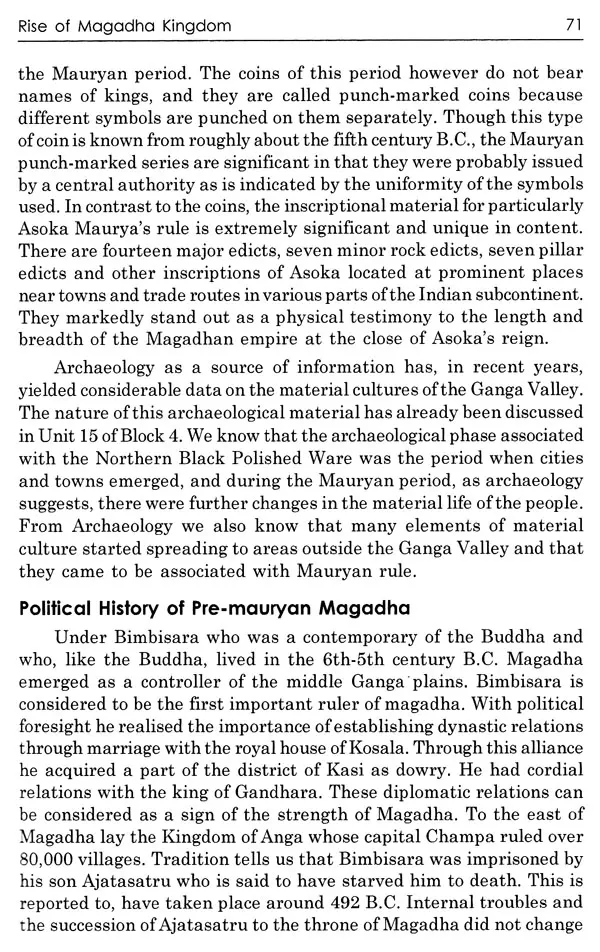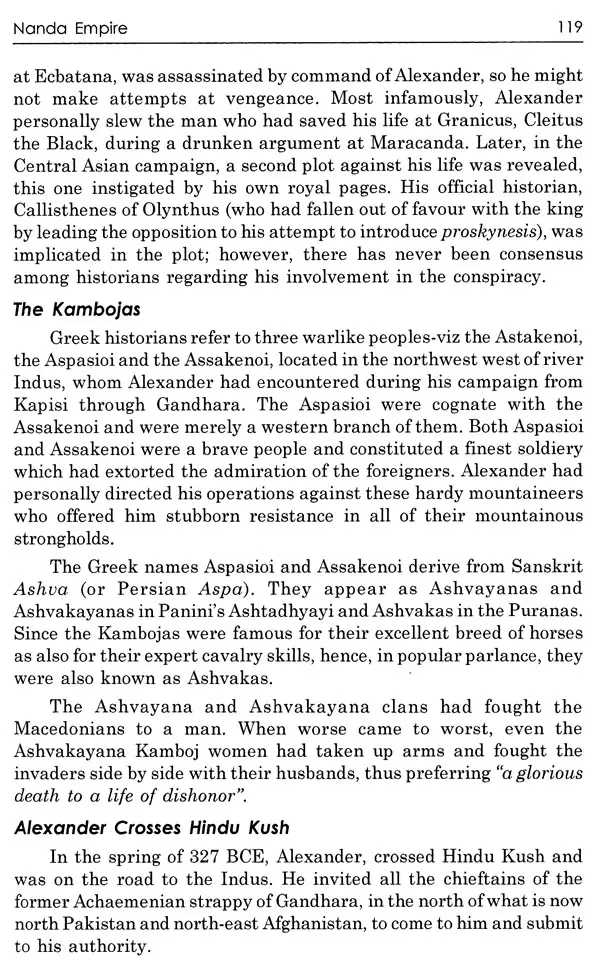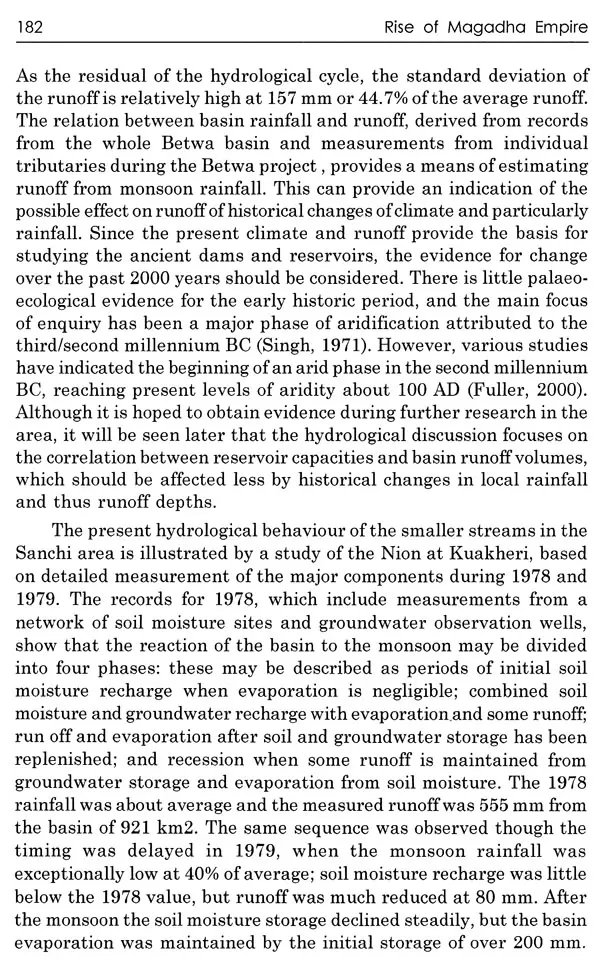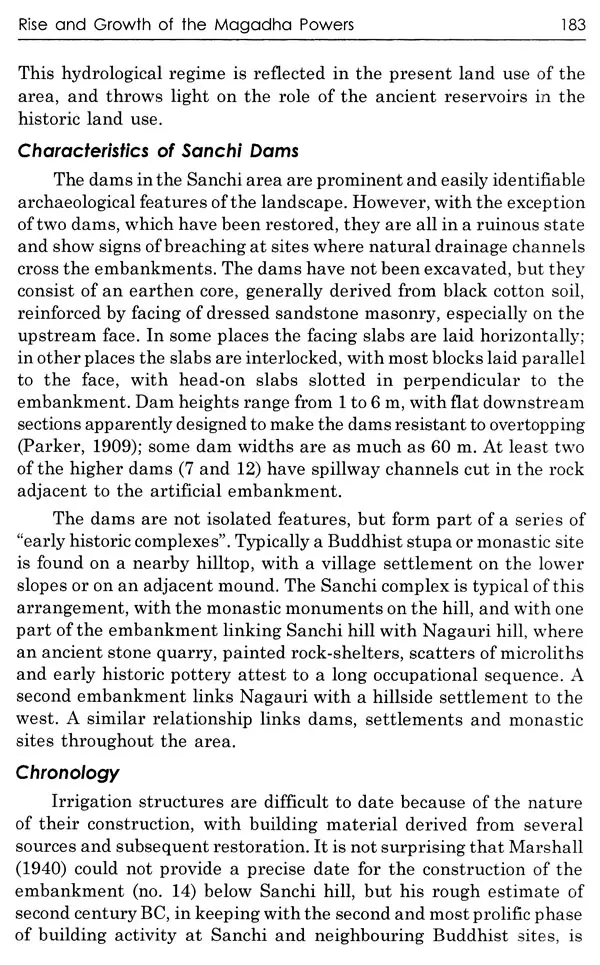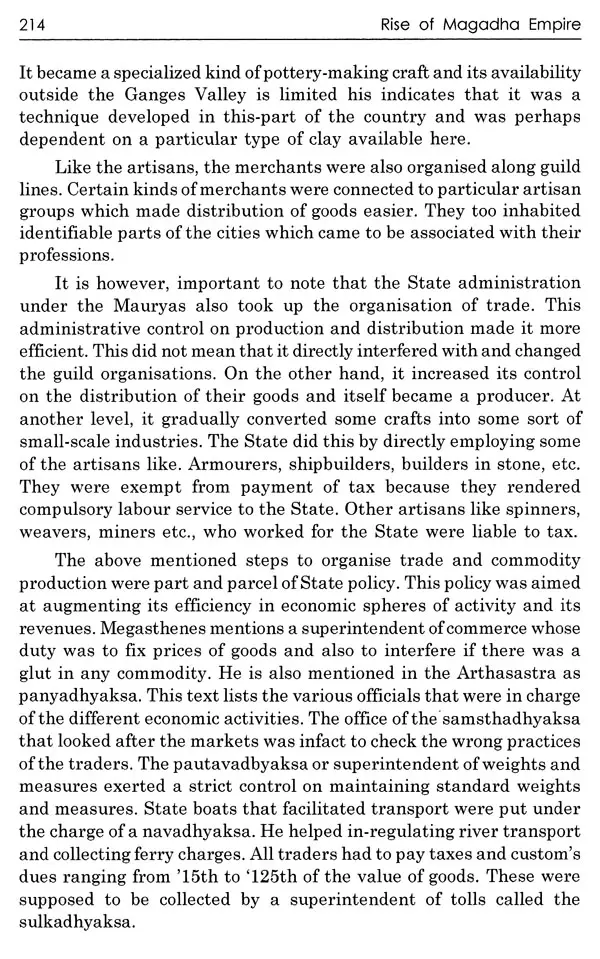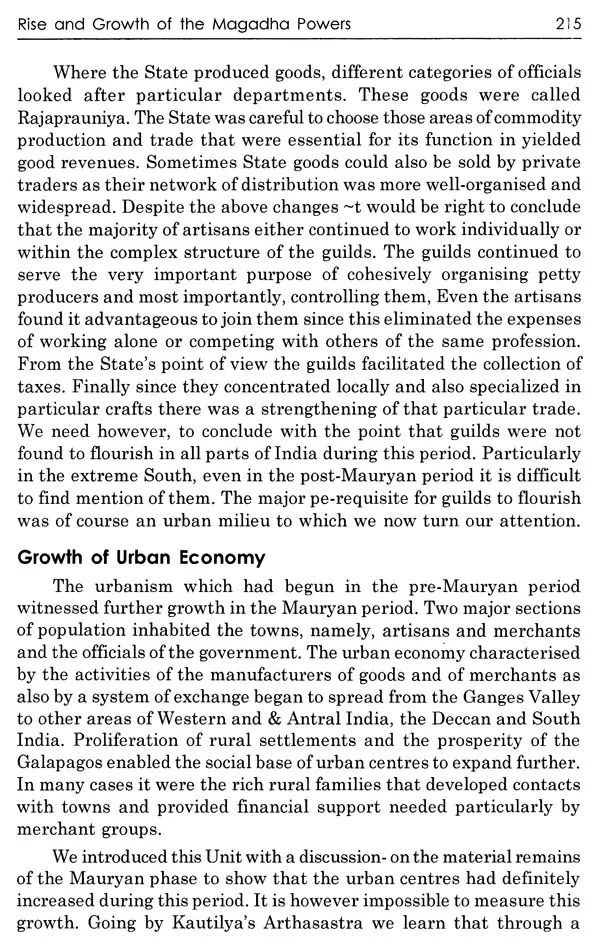
Rise of Magadha Empire
Book Specification
| Item Code: | UAR174 |
| Author: | Dayananda Rajavade |
| Publisher: | Peridot Literary Books |
| Language: | English |
| Edition: | 2022 |
| ISBN: | 9789390393268 |
| Pages: | 279 |
| Cover: | HARDCOVER |
| Other Details | 9.50 X 6.50 inch |
| Weight | 630 gm |
Book Description
Magadha was an ancient Indian kingdom in southern Bihar, and was counted as one of the sixteen Mahajanapadas, 'Great Countries' of ancient India. Magadha played an important role in the development of Jainism and Buddhism, and two of India's greatest empires, the Maurya Empire and Gupta Empire, originated in Magadha. In the sixth country BC. North India was divided into sixteen kingdoms out of which Avanti, Vatsa, Kosala and Magadha rose into prominence by aggrandizing upon other weaker states. These four states involved themselves in internecine quarrel in which Magadha emerged as the most powerful state and acquired mastery in the political domain of India. Magadha rose into prominence under the rule of Bimbisara who belonged to the Haryanka dynasty. With the fall of the Nandas, Magadha entered into another phase of her glorious history under the Mauryas. Under the maurya dynasty the Magadhan empire reached the apex of glory. This comprehensive book of history details the major dynasties of Magadh during ancient period. Students of graduate studies will find this book as a great resource guide in their studies.
Dayananda Rajavade is Associate Professor in the Department of History at Gaya College, Gaya, a constituent unit of Magadh University, Bodhgaya. His several research papers have been published in reputed journals and he attended and presented papers in many national seminars and symposiums.
Magadha was an ancient Indian kingdom in southern Bihar, and was counted as one of the sixteen Mahajanapadas, 'Great Countries' of ancient India. Magadha played an important role in the development of Jainism and Buddhism, and two of India's greatest empires, the Maurya Empire and Gupta Empire, originated in Magadha. In the sixth country B.C. North India was divided into sixteen kingdoms out of which Avanti, Vatsa, Kosala and Magadha rose into prominence by aggrandizing upon other weaker states. These four states involved themselves in internecine quarrel in which Magadha emerged as the most powerful state and acquired mastery in the political domain of India.
Magadha rose into prominence under the rule of Bimbisara who belonged to the Haryanka dynasty. Most probably he overthrew the Brihadrathas from Magadha and assumed the title "Srinika" after his accession. He ruled Magadha from 544 B.C. to 493 B.C. His greatest achievement was the establishment of Magadhan empire. He followed fourfold policy in order to fulfill his programme of imperial expansion. By adopting the policy of matrimonial alliance, Bimbisara tried to augment his power. The next policy of Bimbisara for the expansion of Magadhan empire was the policy of conquest. As a farsighted diplomat, Bimbisara had followed the policy of friendship towards the distant neighbours to win their co-operation for the safety and security of his empire. By introducing a highly efficient system of administration, Bimbisara consolidated his conquests. His administration was found to have been really well-organised and efficient. He made Magadha a paramount power in the sixth century B.C. It is said that his kingdom had consisted of 80,000 villages. He was also a devotee of Buddha. The reign of Ajatasatru. witnessed the high watermark of Bimbisara dynasty. From the very beginning Ajatasatru pursued the policy of expansion and conquest. Ajatasatru was succeeded by his son Udayin who ruled for sixteen years.
Book's Contents and Sample Pages
